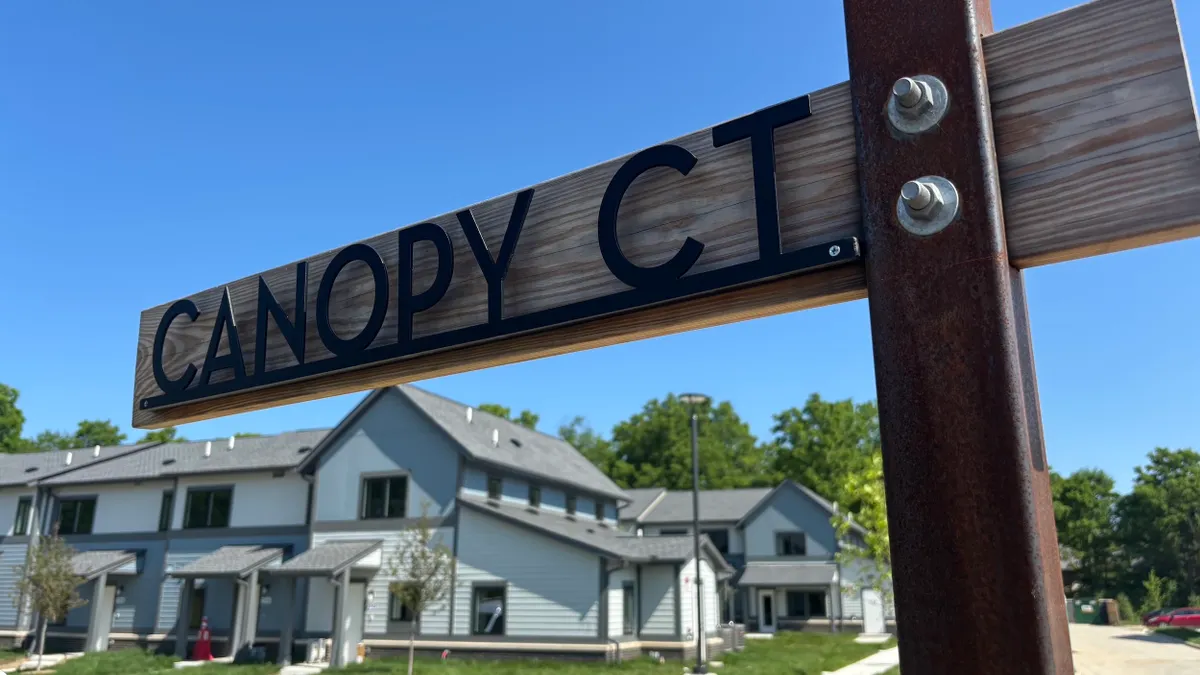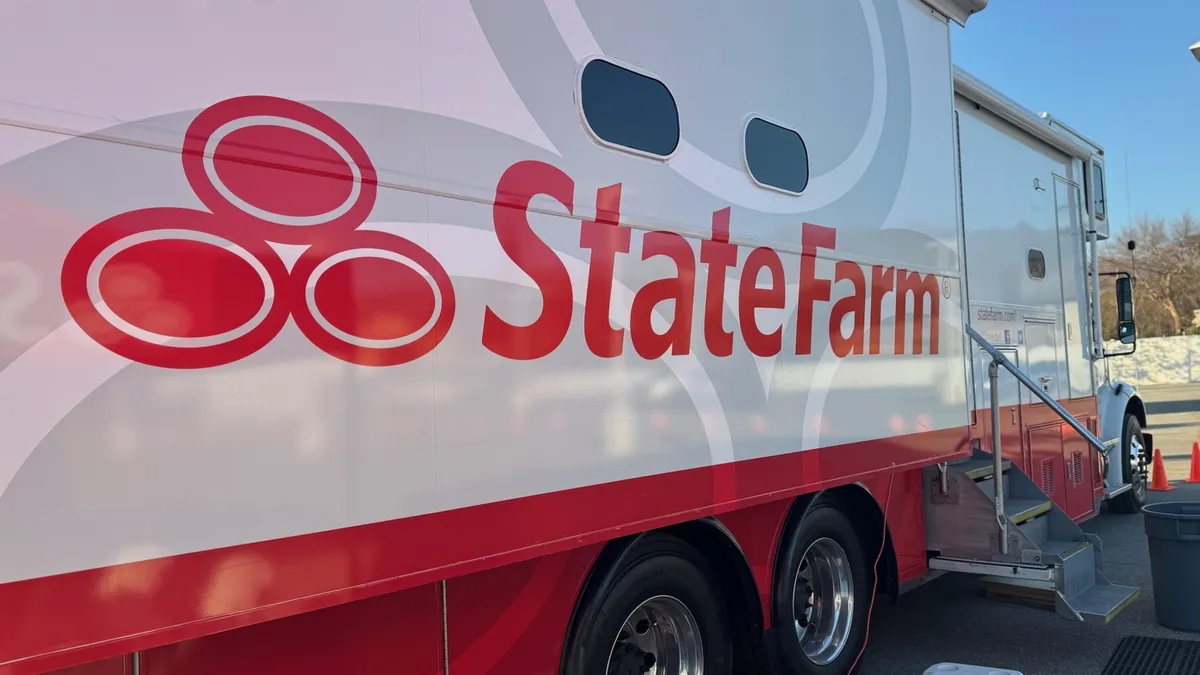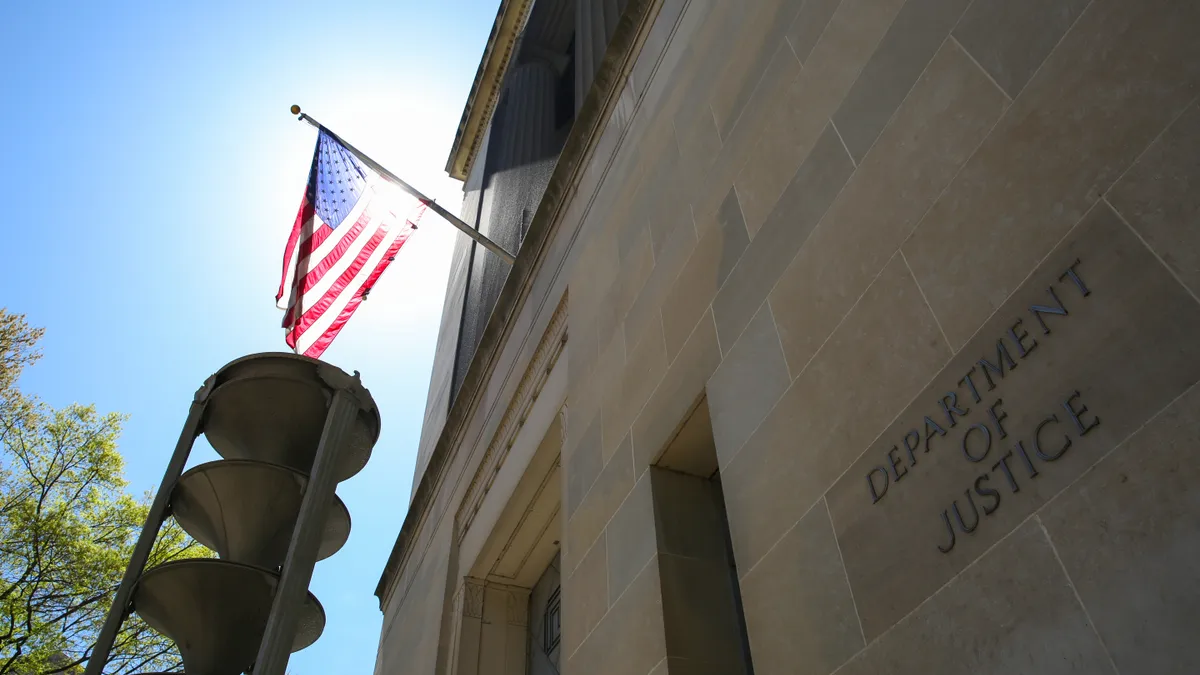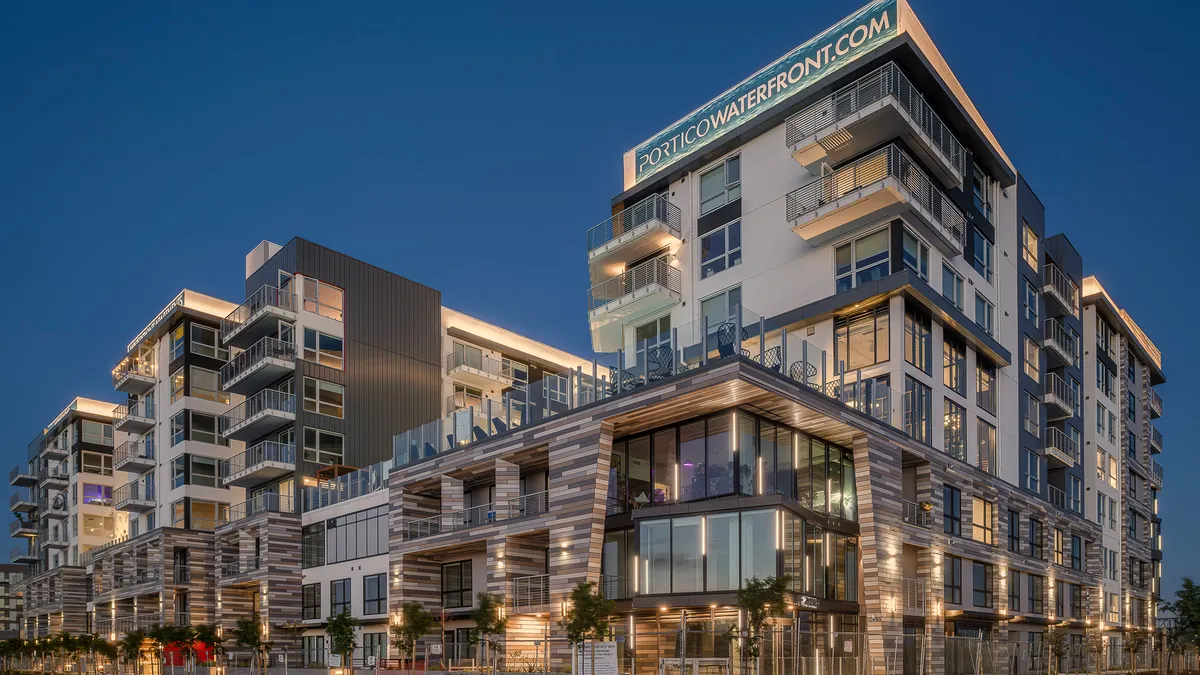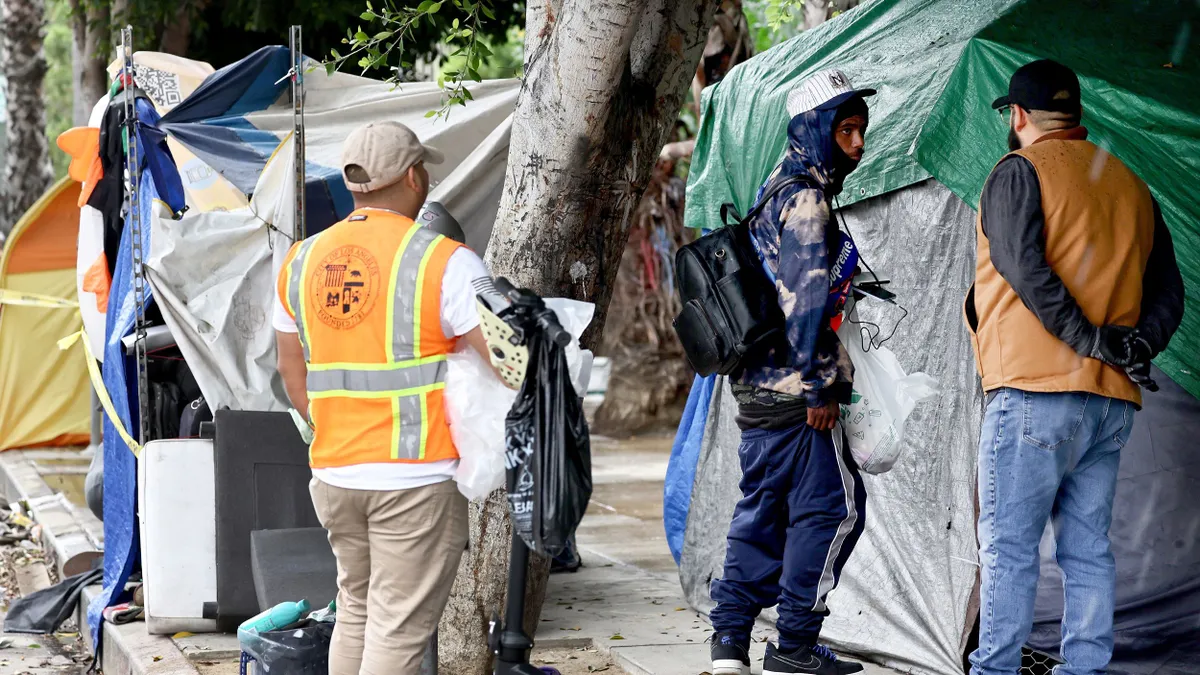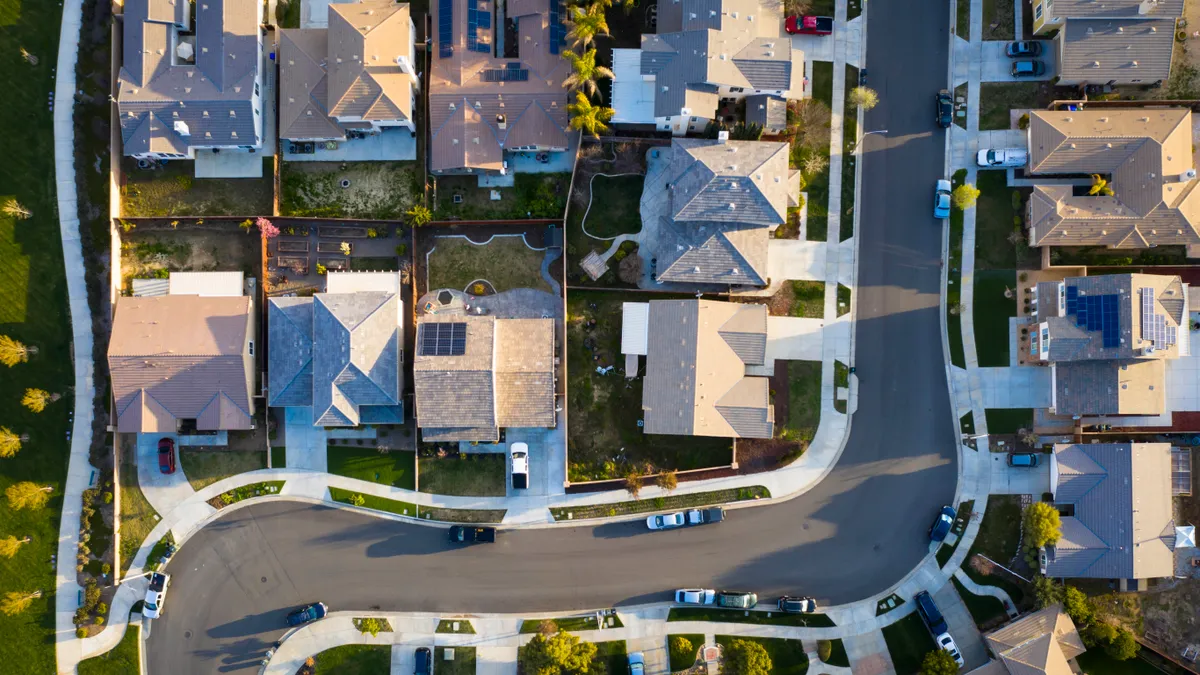Across much of the U.S., retail centers and malls face a precarious future, while many cities struggle with a lack of affordable housing. Some local governments are converting unused strip centers and malls into housing or mixed-used developments to address both challenges.
“Retail has become the wild west these days with much uncertainty, versus in housing, where there’s a crisis,” said Kaitlin Morris, director of development at Village Partners, a real estate development company. In Redlands, California, Village Partners is redeveloping Redlands Mall into State Street Village, a mixed-use, pedestrian district.
Real estate firm CBRE reported in December 2022 that more than 50 million square feet of retail space had left the market since 2003. CBRE expects this trend to continue in 2023 as owners of struggling malls and centers convert their properties to mixed-use developments.
Brick-and-mortar retail becomes less valuable the more consumers shop online, said Peter Calthorpe, urban design and planning principal with HDR Inc. Calthorpe advocates for what he calls a “Grand Boulevards” approach to urban design, which converts undervalued and underutilized strip commercial to mixed-use, mixed-income, workforce housing.
Federal Assistance, Legislation Supports Conversions
The American Rescue Plan contained more than $65 billion in aid to cities, towns, and villages. Michael Wallace, legislative director of community and economic development at the National League of Cities, said cities had used federal grants to acquire properties they could turn into transitional housing. He added that cities are looking at available tax credits in areas that are well-suited to market-rate housing and considering mixed-income housing.
In some areas, legislation is helping the conversion of malls into housing. A California law will take effect on July 1, streamlining the local approval process for certain affordable and mixed-income housing projects on commercial land. “This could be a contributor to more ‘malls-to-housing’ projects in the future,” said Dori Ganetsos, housing policy senior specialist with California Department of Housing and Community Development.
The legislation will enable the construction of about 10 million housing units annually versus the 80,000 California produces now, Calthorpe says. He estimates, however, that only 2 million housing units are "market feasible" with today's high construction and land costs, and even fewer are likely to be built within a year. Still, he said, costs are likely to come down in future years, making more projects feasible. “It’s a systemic game changer," he said of the legislation.
Also helping to facilitate these projects: they generally aren’t in the middle of residential neighborhoods. As a result, they may be less likely to spark opposition from residents worried about development or density, said Ed McMahon, senior fellow with the Urban Land Institute. Additionally, many strip centers and malls are near highways, and if they don’t already have public transportation, they can be “transit-ready” in short order, he added.
Redlands Mall to State Street Village
Unlike many shopping centers, Redlands Mall is in the middle of Redlands, California. It was built in the 1970s when downtowns gave way to suburbia, said Brian Desatnik, Redlands’ development services director. The mall, which covered six square blocks of downtown, was considered a great urban amenity at the time, he said.
By the 1990s, however, it was fading and mostly vacant, Desatnik said. “It’s been an eyesore right in the middle of downtown,” he said.
In late 2022, the city approved plans for a mixed-use redevelopment. State Street Village will include more than 12,300 square feet of offices and nearly 72,000 square feet of retail and restaurants. The approximately 700 apartments and condominiums will be market-rate, Desatnik says. While Redlands is working on securing a city-wide inclusionary housing ordinance, the city approved the project before that work began, Desatnik says.
By the time the project was approved, the developers had worked with the city and engaged residents for about four years, Desatnik said. As a result, they’d become known, trusted entities, he said.
Community Engagement Key
The project still faced some opposition, however. Often, there’s a general resistance to density, Village Partners’ Morris said.
Misinformation is another challenge. Morris and her colleagues talked to as many people as they could to correct, for instance, the idea that the development would be seven stories high and not three and four levels as designed. She said correcting misinformation is easier when more residents know the facts.
“Do community engagement before you spend money,” the NLC’s Wallace said. He added that connecting with current and potential residents and neighborhood leaders takes longer upfront but can reduce the risk of arguments or challenges later.
Early community outreach also can generate ideas that improve the design. Morris and her team are using design elements from the tile work previously used in the mall as inspiration for branding and artwork. “The earlier you engage, the more you can integrate ideas,” she added.
Rethinking parking requirements helps, as well. Morris noted that many zoning requirements overestimate parking needs. With State Street Village, the development team has been able to use more appropriate ratios, she added.
Because many projects mix residential and commercial uses, it’s important to consider all the support residents may need, such as access to groceries and childcare. “You don’t want to necessarily remove all commercial space opportunities from the neighborhood,” Wallace said.
To promote affordable housing, cities and counties can incorporate affordability requirements in their planning efforts, Ganetsos said. Jurisdictions can also enact policies to lower overall construction costs, such as reducing or removing parking requirements and streamlining the approvals process. Such actions make it easier for development proposals to “pencil out” at lower rents, she added. She notes that the state doesn’t maintain data on completed malls-to-housing projects, but of the proposals the state is aware of, most, like the redevelopment of Sunrise Mall in Citrus Heights, have proposed a mix of affordable and market-rate units.
Converting a failing mall into a housing development or mixed-use center can help cities attract new residents — critical now that many white-collar workers can live and work anywhere. “If you can’t differentiate your community, you have no competitive advantage,” ULI’s McMahon said.
Clarification: We have updated this story to clarify the number of housing units Peter Calthorpe estimated would likely be built under the legislation.








